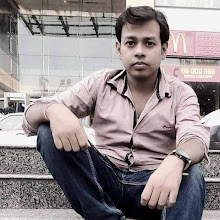Ramayana-Mahabharata Parallels: Intriguing Connections
Threads of Fate: Intriguing Parallels Between the Ramayana and Mahabharata:
The Ramayana and Mahabharata, two of the greatest epics in Hindu mythology, share intriguing parallels and coincidences that captivate the imagination. Here's an engaging exploration of the connections between these ancient tales:
3.Monkey and Ape Allies: Hanuman, the devoted ally of Rama, and the vanara (monkey) army draw parallels with the monkey troops allied with the Pandavas in the Mahabharata. Hanuman and Bhima, both possessing immense strength, share similarities in their heroic deeds.
4.Guiding Companions: In the Ramayana, Jatayu, the noble eagle, supports Rama's quest. In a parallel narrative, the Mahabharata introduces Vidura, a wise counselor, providing sagacious guidance to the Kauravas.
5.Loyalty and Brotherhood: The unwavering loyalty of Lakshmana towards Rama echoes the loyalty of Arjuna and Bhima towards their eldest brother, Yudhishthira, in the Mahabharata. Brotherhood is a central theme in both epics.
6.Kidnapping of Women: Sita's abduction by Ravana in the Ramayana and the attempted disrobing of Draupadi in the Mahabharata both involve heinous acts against virtuous women, leading to significant consequences.
7.Cunning Strategies: The Mahabharata's Kurukshetra War and the Ramayana's battles against Ravana showcase strategic warfare and the use of clever tactics. Arjuna's role in the Kurukshetra War is often likened to Rama's battle against Ravana.
8.Divine Intervention: Both epics involve divine beings intervening in mortal affairs. Lord Krishna, a key figure in the Mahabharata, serves as a guide to the Pandavas, while Lord Rama receives guidance from sage Vishwamitra and Lord Hanuman.
9.Episodes of Disguise: The Mahabharata has the episode of Arjuna disguising himself as Brihannala during the Pandavas' one-year incognito exile. Similarly, Lord Rama and Lakshmana disguise themselves during their time in the forest.
10.Mysterious Weapons: The Ramayana mentions the Brahmastra, a divine weapon used by Rama, and the Mahabharata features various celestial weapons, including the Brahmastra wielded by Arjuna.
The same as opposite:
12.Attraction and Marriage:
There are similarities between the characters Ravana and Shishupala in their antagonistic roles towards Rama and Krishna respectively.
In the Mahabharata, Ravana is said to be reincarnated as Shishupala.
In the Ramayana, Ravana, the king of Lanka, indeed desires to marry Sita, the wife of Lord Rama. However, in the Mahabharata, Shishupal(Ravan's next birth) animosity towards Krishna(Sree Ram's next birth)stems from different reasons, such as Krishna's role in the marriage of Shishupal's cousin, Princess Rukmini.
13.Pivotal Moments:
In the rich tapestry of Hindu mythology, the births of Lord Rama and Lord Krishna stand as profound moments in cosmic history.
During Treta Yuga, when Lord Rama graced King Dasharatha and Queen Kaushalya with his presence in Ayodhya, a remarkable phenomenon unfolded. While King Dasharatha exuded boundless joy, his smile seemed to light up the heavens, the infant Rama, in contrast, shed tears, as if empathizing with the sorrows of humanity. The king Dasharatha, the father of Lord Rama, was reincarnated as Vasudeva, the father of Lord Krishna.
In the subsequent Dwapara Yuga, when Lord Krishna descended upon the earthly realm, the narrative took a poignant turn. As King Vasudeva, overwhelmed with emotion, welcomed his divine son into the world, tears flowed down his face. Meanwhile, the infant Krishna, radiating with celestial splendor, greeted the world with a gentle smile, offering solace and reassurance to mankind.
14.The time of birth:
In the annals of Hindu mythology, the births of two beloved divine incarnations, Lord Rama and Lord Krishna, are rich with symbolism and spiritual significance.
It is said that when Sri Rama, epitome of righteousness and virtue, descended into the mortal realm, the sun bathed the earth in its golden glow, painting the sky with hues of dawn. Yet, despite the luminous dawn, the world lay draped in the quietude of slumber, unaware of the celestial event unfolding in its midst.
In stark contrast, during the age of Dwapara Yuga, the birth of Lord Krishna, the embodiment of divine love and compassion, unfolded amidst the stillness of the midnight hour. While humanity slept, enveloped in the comforting embrace of darkness, the cosmos bore witness to a wondrous spectacle. In the depths of night, the newborn Krishna, adorned with celestial radiance, illuminated the world with his divine presence, infusing the darkness with the brilliance of his divine light.
These intriguing coincidences and parallels between the Ramayana and Mahabharata not only add depth to the narratives but also reflect the timeless themes of righteousness, duty, loyalty, and the eternal struggle between good and evil in Hindu mythology. The interconnectedness of these epics serves as a testament to the rich tapestry of stories that form the cultural and spiritual heritage of India.













Post a Comment